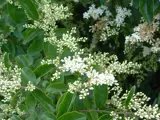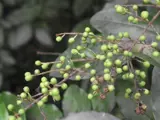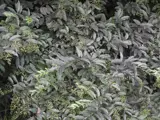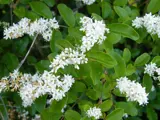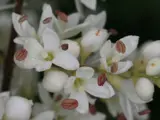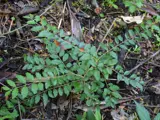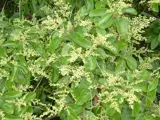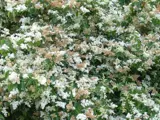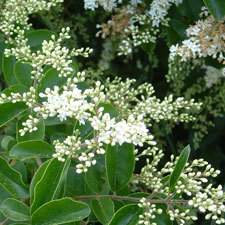 Chinese privet
Chinese privet
Common name: Chinese privet
Botanical name: Ligustrum sinense
Management programme: Advisory
This plant originates in China and was introduced to New Zealand for hedging as an ornamental plant in 1950. Chinese privet has been used in the past for spears and darts by Chinese martial artists and used for arrow wood in North America as its shoots are often straight with flexible, springy and tough wood.
Its pollen and scent are believed by some to contribute to respiratory disorders such as asthma and hay fever. However, research indicates that privet is not an allergen for majority of people. It is likely that other species flowering or pollinating at the same time of year are responsible in most cases.
Why is it a pest?
- Chinese privet produces many highly viable seeds that are primarily spread by birds.
- It forms dense stands which prevent the establishment of native species and displaces vulnerable native shrub species.
- Berries can be poisonous to native fauna, in particular insects.
- Plants are short-lived but continuously replaced due to profuse re-seeding.
- Tolerates most soil types and climatic conditions.
Where is it found?
Privet is widespread throughout the Bay of Plenty. It is not cost effective or feasible for the Council to manage its control.
Privet can be found in a variety of habitats. Its seed is primarily spread by birds.
What does it look like?
- Shrub or small tree 2-7m tall.
- Evergreen or semi-deciduous in cold districts with warty lumps on stems and densely hairy shoots.
- Oval, dull green leaves with occasional wavy edges.
- Loose dropping clusters of small, tubular, very fragrant, white flowers that appear from July to March.
- Flowering is followed by round green berries that mature to dull purplish-black.
What are the rules?
Advisory
The Bay of Plenty Regional Council does not enforce the control of advisory species. It is landowner/occupier responsibility to manage these pests. Council may provide advice on how to manage or control these species if required.
How do you get rid of it?
Recommended:
- Pull or dig out small seedlings.
- Stump treat year-round with metsulfuron.
- Drill and inject, 1 hole per 20cm of stem diameter with metsulfuron or picloram (2g dissolved in 50ml of water).
- Spray in Spring to Autumn with metsulfuron (5g) and penetrant (10mL) per 10L water.
Untreated stumps resprout quickly. Control will need to be followed up every six months. Replant area to reduce seedling growth.
CAUTION: When using any herbicide or pesticide, PLEASE READ THE LABEL THOROUGHLY to ensure that all instructions and directions for the purchase, use and storage of the product, are followed and adhered to.
Read more on pest control advice, information and regulations.
Images

